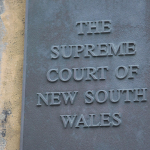The Mandela Rules: Minimum Prison Standards Must Be Implemented

Nelson Mandela famously said, “no one truly knows a nation until one has been inside its jails.” And after revelations about the mistreatment and torture of young people inside Darwin’s Don Dale youth detention centre, it must be acknowledged we have fallen short of our obligations towards the detained.
Indeed, a visit to any of the nation’s correctional facilities reflects poorly on our nation, reflecting deeply entrenched prejudices. For instance, First Nations people currently make up 27 percent of Australia’s adult prisoner population, while only accounting for only 2.8 percent of the overall populace.
It’s because prisons are closed environments, and detainees are out of sight, that mistreatment and abuse can occur and indeed flourish. And this hidden element is at least partially to blame for a situation where adults have been tear gassing and hog-tying children in Australia’s youth detention system.
Ensuring the dignity of detainees
The Nelson Mandela Rules are the revised version of the United Nations Standard Minimum Rules for the Treatment of Prisoners (SMRs). The original SMRs were first adopted by the UN Congress on Crime Prevention and Criminal Justice in 1955.
The rules were approved by the UN Economic and Social Council in 1957.
They set out the minimum standards as to how all prisoners should be treated, which is with respect and dignity. The SMRs also outline that no detainee should be subjected to “torture and other cruel, inhuman or degrading treatment or punishment.”
The second rule provides a basis for all others. It outlines that no inmate should be discriminated against on any grounds or status, including race, sex, religion, politics or national origin. And prison authorities must take into account the needs of all inmates, especially the most vulnerable.
In 2010, the UN General Assembly requested the Commission on Crime Prevention and Criminal Justice establish an expert group to revise the SMRs to reflect “recent advances in correctional science and best practices.”
The UN General Assembly adopted the revised SMRs on December 17 2015. They were dubbed the Mandela Rules to honour the legacy of the late South African president, who spent 27 years behind bars during his struggle for equality and human rights.
For every aspect of life on the inside
The Mandela rules aren’t legally binding. But they do set guidelines regarding a range of aspects of the prison environment. The very existence of the SMRs ensures that the protection of the human rights of prisoners, as well as all detainees, is an issue that is of concern for governments.
Minimum standards regarding prisoner hygiene, the provision of food, clothing and bedding, medical services, and discipline and punishment are all set out in the document. It also contains guiding principles regarding rehabilitation, education and post-release services.
And as you peruse the rules and recommendations outlined in the Mandela document, it becomes apparent that this nation’s prison system is failing to uphold the human rights of Australian inmates in several ways.
Overcrowding is a breach of standards
The rules 12 through to 17 outline the minimum standards of accommodation that inmates should be provided. If a prison contains individual cells, then these single rooms should only be occupied by one person at a time, as “it is not desirable to have two or more prisoners in one cell.”
Whereas, if dormitories are being used, then prisoners occupying that space should be carefully selected as suitable to associate with each other. Special consideration should be given to aspects of sleeping accommodation, such as “cubic content of air, minimum floor space… and ventilation.”
However, many Australian correctional facilities are bursting at the seams. In September last year, there were 41,262 adult prisoners in this country, which puts the nation’s prisoner population at an all-time high. The number of Australian inmates has been steadily increasing since the 1970s.
In 2016, inmates were being forced to share single cells at the Maryborough Correctional Centre in Queensland. One detainee would be forced to sleep on a mattress on the floor up close to the toilet. While at Victoria’s Dhurringile prison, shipping containers were being used as cells.
Prolonged isolation is torture
The Mandela Rules specifically state that the use of indefinite or prolonged solitary confinement should be prohibited. The document defines solitary confinement as up to 22 hours a day without meaningful human contact. And prolonged confinement is for more than 15 days.
The standards further outline that solitary confinement should only be used as a last resort. It should never be used on prisoners with disabilities if it will exacerbate their conditions. And the practice should be banned for women and children.
Australian prisons continue to use solitary confinement regularly, and this includes on women and children. And it was found that youths were being held in solitary confinement in the Don Dale facility for 17 days straight, for up to 23 hours a day.
“A form of sexual assault”
The rules also state that searches shouldn’t be used “to harass, intimidate or intrude unnecessarily upon a prisoner’s privacy.” And this is especially true of strip searches, which should be kept to a minimum, and only “undertaken if absolutely necessary.”
However, strip searches are still commonly used in Australian prisons. A recent Victorian Ombudsman investigation of Victoria’s main women’s prison – the Dame Phyllis Frost Centre – found that strip searches were regularly being used on detainees in the visiting section of the prison.
And this was despite the searches resulting in almost no contraband being discovered.
Victorian Ombudsman Deborah Glass said that the “humiliating, degrading and undignified practice” was of particular concern, as many women prisoners are victims of sexual abuse, and the strip searches can lead to further trauma.
Following the investigation, the Ombudsman made 19 recommendations to the Victorian Department of Justice and Regulation. The department agreed to all the recommendations, except for the one calling on the prison administration to stop the practice of routine strip searching.
For the benefit of all
As Ms Glass told Sydney Criminal Lawyers® last week, upholding the rights of prisoners is essential, as “how we treat prisoners is a mark of our civilisation, and preventing abuses in detention is simply the right thing to do.”
Not only is the protection of prisoner’s rights the humane way to proceed, but it also has flow on effects for the rest of the community, as the majority of inmates will eventually leave the prison system, and if they’ve been mistreated inside, this will impact on how they treat others on the outside.








